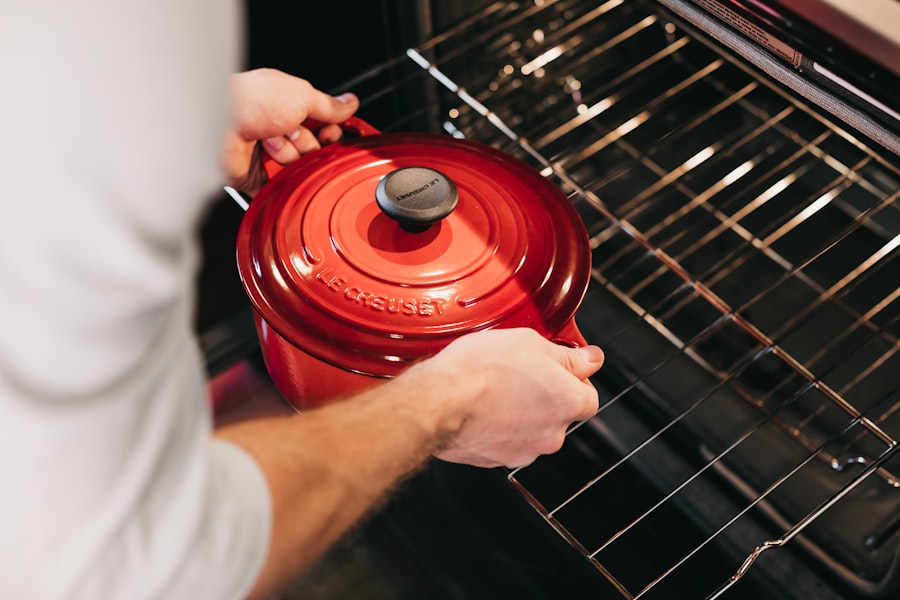Heat lamps for chickens primarily provide essential warmth to young chicks in their first weeks of life. Chicks cannot effectively regulate their body temperature and require an external heat source to maintain optimal conditions. The heat lamp simulates the warmth of a mother hen, creating a safe and comfortable environment for chick development.
This supplemental heat prevents chilling, which can be harmful to chick health and growth. Heat lamps also promote healthy feather development and overall growth in young chicks. Another crucial function of heat lamps is to create an ideal brooding environment.
Brooding is the period when chicks are kept in a warm, protected area to shield them from predators and harsh weather. The heat lamp maintains a consistent temperature in the brooding space, ensuring chicks remain warm and comfortable. This allows chicks to focus their energy on eating, drinking, and growing, rather than struggling to stay warm in a cold environment.
Heat lamps play a vital role in providing the necessary warmth and comfort that young chicks require during the critical early stages of their development. This support is essential for their overall well-being and sets the foundation for healthy growth into adulthood.
Table of Contents
- 1 Determining the appropriate age for using a heat lamp
- 2 Monitoring temperature and adjusting the heat lamp accordingly
- 3 Gradually reducing the use of the heat lamp as the chickens grow
- 4 Considering environmental factors when deciding how long to keep the heat lamp on
- 5 Potential risks and safety precautions associated with using a heat lamp
- 6 Seeking professional advice for specific situations or concerns
- 7 FAQs
Key Takeaways
- A heat lamp for chickens is used to provide warmth and mimic the natural environment for young chicks.
- Chicks should be kept under a heat lamp until they are fully feathered, usually around 6-8 weeks of age.
- It is important to monitor the temperature under the heat lamp and adjust the height or wattage as needed to maintain a comfortable environment for the chicks.
- As the chickens grow and develop feathers, the use of the heat lamp should be gradually reduced to help them acclimate to the ambient temperature.
- Environmental factors such as the season and the location of the brooder should be considered when deciding how long to keep the heat lamp on.
- Potential risks of using a heat lamp include fire hazards and burns, so it is important to follow safety precautions such as using a secure fixture and keeping the lamp away from flammable materials.
- Seek professional advice if you have specific concerns or unique circumstances regarding the use of a heat lamp for your chickens.
Determining the appropriate age for using a heat lamp
The appropriate age for using a heat lamp for chickens depends on several factors, including the breed of the chicks, the ambient temperature, and the specific needs of the individual chicks. In general, most chicks will require a heat lamp for the first four to six weeks of their lives. During this time, they are not yet able to regulate their body temperature effectively and are highly susceptible to chilling.
However, it is important to monitor the behavior and condition of the chicks to determine when they are ready to be weaned off the heat lamp. Signs that chicks may be ready to be weaned off the heat lamp include active and vigorous behavior, the ability to maintain their body temperature without huddling together constantly, and the development of fully feathered bodies. It is important to note that different breeds of chickens may have different heat requirements, so it is essential to consider the specific needs of the chicks in question.
Additionally, ambient temperature plays a significant role in determining when chicks can be weaned off the heat lamp. If the ambient temperature is consistently warm, chicks may be able to do without a heat lamp at an earlier age. On the other hand, if the ambient temperature is cooler, chicks may require the heat lamp for a longer period of time.
Ultimately, determining the appropriate age for using a heat lamp for chickens requires careful observation and consideration of various factors to ensure that the chicks are provided with the right level of warmth and comfort during their early development.
Monitoring temperature and adjusting the heat lamp accordingly

Monitoring the temperature in the brooding area is crucial for ensuring that the chicks are kept at an optimal level of warmth. It is important to use a reliable thermometer to measure the temperature in the brooding area regularly. The ideal temperature for young chicks is around 95 degrees Fahrenheit during their first week of life, with a gradual decrease of 5 degrees per week until they are fully feathered and able to maintain their body temperature without supplemental heat.
Adjusting the height of the heat lamp can help to regulate the temperature in the brooding area. Raising the lamp higher will reduce the amount of heat reaching the chicks, while lowering it will increase the heat. It is important to pay attention to the behavior of the chicks as well, as this can provide valuable insight into whether they are comfortable or too warm or too cold.
Chicks that are huddled together directly under the heat lamp may be too cold, while chicks that are panting or avoiding the heat source may be too warm. Making adjustments to the height and positioning of the heat lamp based on these observations can help to ensure that the chicks are kept at a comfortable and safe temperature. Regular monitoring and adjustments are essential for maintaining an optimal environment for young chicks as they grow and develop.
Gradually reducing the use of the heat lamp as the chickens grow
As chickens grow and develop, they become increasingly capable of regulating their body temperature without relying on supplemental heat. It is important to gradually reduce the use of the heat lamp as the chicks mature to encourage them to acclimate to natural environmental conditions. This process typically involves lowering the temperature provided by the heat lamp by 5 degrees Fahrenheit each week until it is no longer needed.
This gradual reduction helps to prevent thermal shock and allows the chicks to adjust gradually to cooler temperatures. In addition to reducing the temperature provided by the heat lamp, it is also important to gradually increase ventilation in the brooding area as the chicks grow. This helps them acclimate to changes in temperature and prepares them for life outside of the brooding area.
By gradually reducing the use of the heat lamp and increasing ventilation, young chickens can develop resilience and adaptability, setting them up for success as they transition to life outside of the brooding area.
Considering environmental factors when deciding how long to keep the heat lamp on
When deciding how long to keep the heat lamp on for young chickens, it is important to consider various environmental factors that can impact their need for supplemental warmth. Ambient temperature plays a significant role in determining how long chicks will require a heat lamp. If the ambient temperature is consistently warm, chicks may be able to do without a heat lamp at an earlier age.
On the other hand, if the ambient temperature is cooler, chicks may require the heat lamp for a longer period of time. It is also important to consider any drafts or fluctuations in temperature within the brooding area. Drafts can make it difficult for chicks to maintain their body temperature, increasing their reliance on supplemental heat.
Ensuring that the brooding area is well-insulated and free from drafts can help reduce the need for a heat lamp and create a more stable environment for young chicks. Additionally, factors such as humidity levels and air circulation can also impact how long chicks will require a heat lamp. By considering these environmental factors, chicken owners can make informed decisions about when it is appropriate to wean their chicks off supplemental heat.
Potential risks and safety precautions associated with using a heat lamp

While heat lamps can provide essential warmth for young chicks, they also come with potential risks that need to be addressed. One of the primary risks associated with using a heat lamp is fire hazard. Heat lamps can become extremely hot and pose a fire risk if they come into contact with flammable materials such as bedding or nesting materials.
It is crucial to ensure that heat lamps are securely installed and positioned away from any flammable materials in the brooding area. Another risk associated with using a heat lamp is overheating or burning of the chicks. If a heat lamp is positioned too close to the chicks or provides too much heat, it can cause overheating or burns.
It is important to monitor the behavior of the chicks and regularly check the temperature in the brooding area to ensure that they are not being exposed to excessive heat. Using a reliable thermometer and making adjustments to the height and positioning of the heat lamp can help prevent overheating and ensure that the chicks are kept at a comfortable temperature. To mitigate these risks, it is essential to follow safety precautions when using a heat lamp for chickens.
This includes using a secure and stable fixture to hang the heat lamp, positioning it away from flammable materials, and regularly checking for any signs of wear or damage. Additionally, using a heat lamp with a protective guard can help prevent direct contact between the chicks and the hot bulb. By being aware of potential risks and taking appropriate safety precautions, chicken owners can ensure that their chicks are kept safe and comfortable with a heat lamp.
Seeking professional advice for specific situations or concerns
In some cases, specific situations or concerns related to using a heat lamp for chickens may require professional advice or guidance. If chicken owners are unsure about how to properly set up and use a heat lamp, or if they have concerns about potential risks or safety precautions, seeking advice from a professional such as a veterinarian or experienced poultry farmer can provide valuable insights and recommendations. Professional advice can also be beneficial when dealing with unique circumstances or challenges related to using a heat lamp for chickens.
For example, if there are specific health issues or developmental concerns with individual chicks, consulting with a veterinarian can help determine how best to provide supplemental warmth while addressing any underlying issues. Additionally, professionals can offer guidance on alternative heating methods or equipment that may be more suitable for specific situations. Overall, seeking professional advice can help ensure that young chickens are provided with appropriate warmth and care while minimizing potential risks associated with using a heat lamp.
Professionals can offer tailored recommendations based on individual circumstances and provide valuable support for chicken owners seeking to create a safe and comfortable environment for their young chicks.
If you’re wondering how long to keep the heat lamp on chickens, you may also be interested in learning about the importance of a well-designed chicken coop and nest box. Check out this article for tips on creating a comfortable and safe environment for your flock.
FAQs
What is a heat lamp for chickens?
A heat lamp for chickens is a source of warmth that is used to keep young chicks warm, especially during the first few weeks of their life.
How long should you keep the heat lamp on for chickens?
Chicks will need a heat lamp for the first 6 weeks of their life. The temperature under the heat lamp should be around 95 degrees Fahrenheit for the first week, and then decreased by 5 degrees each week until the chicks are fully feathered and can regulate their own body temperature.
What are the risks of keeping the heat lamp on for too long?
Keeping the heat lamp on for too long can lead to overheating, which can cause heat stress, dehydration, and even death in young chicks. It’s important to monitor the temperature regularly and adjust the heat lamp accordingly.
Are there alternatives to using a heat lamp for chickens?
Yes, there are alternative methods for providing warmth to young chicks, such as using a brooder heater, heating pad, or even a mother hen if available. It’s important to provide a warm and draft-free environment for the chicks to thrive.
Meet Walter, the feathered-friend fanatic of Florida! Nestled in the sunshine state, Walter struts through life with his feathered companions, clucking his way to happiness. With a coop that’s fancier than a five-star hotel, he’s the Don Juan of the chicken world. When he’s not teaching his hens to do the cha-cha, you’ll find him in a heated debate with his prized rooster, Sir Clucks-a-Lot. Walter’s poultry passion is no yolk; he’s the sunny-side-up guy you never knew you needed in your flock of friends!







